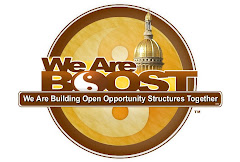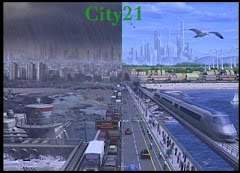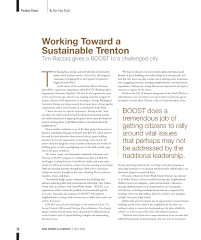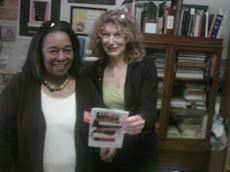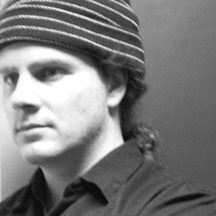When
Sunday, March 9 at 9:30AM
Who
At least 16 Community Green Members.
There's still room for 74 more.
Where
Somerset County Parks Environmental Education Center
190 Lord Stirling Road
Basking Ridge NJ 07920
201-602-4839
Meeting Description:
Over 12,000 people in 12 countries internationally have participated in this amazing Pachamama Alliance Symposium! Join Community Green as we co-host "The Awakening the Dreamer, Changing the Dream Symposium"!
Ariane Delafosse and a team from the Pachamama Alliance will guide you to a place of understanding, compassion and empowerment in relationship to the dire issues facing our planet, a place from where you can activate and implement solutions consistent with your personal talents and gifts.
Together, we will all examine the fundamental cultural patterns that brought us to this point of planetary emergency and get to see that environmental issues are deeply linked to social justice issues, and that both are deeply linked to a crisis of the human spirit.
You will be introduced to an emerging paradigm, based on ancient indigenous wisdom and modern quantum physics which sees life as interconnected and precious, with humans as part of the web of life. Connect to a growing worldwide movement based on this emerging paradigm that is bringing about sweeping changes at a grass roots level all around the world!
Make new friends and contacts who are as passionate and empowered like you, and work to build powerful solutions to the crisis together.
Please plan to arrive at 9:30 as we will take seats to start promptly at 10AM and will continue through 4PM. Light snacks will be served, but we encourage you to bring a healthful Bag Lunch too! Although there will be a lunch break, there will not be sufficient time to go out for lunch.
If you choose not to use Paypal through this site for your $25 payment, please send your check (in advance) to Community Green at P.O. Box 166, Basking Ridge, NJ 07920
This wonderful event is Sponsored by Natural Awakenings Magazine!
For more information, go to www.awakeningthedreamer.org
Sunday, February 24, 2008
Community Green Meetup: Awakening the Dreamer, Changing the Dream Symposium
Posted by
GSS SET Central
at
2/24/2008 07:56:00 AM
0
comments
![]()
![]()
Thursday, February 14, 2008
National Environmental Education Week: A Call for Partners, Hosts, and Sponsors
NATIONAL ENVIRONMENTAL EDUCATION WEEK GETS BOOST IN NEW JERSEY
Year-long public awareness campaign gets underway for the Garden State...
TRENTON (NJ) - In celebration of the fourth annual National Environmental Education Week, Building Open Opportunity Structures Together (BOOST) is excited to invite public, private, and home school educators, parents, and students as well as corporate and business leaders to become actively engaged by being a partner, sponsor, or host of an activity or set of activities during EE Week, which runs from April 13 through 19, 2008. For workshop inquiries, please call (206) 202-2883, or email request for information to gsssetcentral@yahoo.com.
National Environmental Education Week (www.EEWeek.org) promotes a full week of educational activities in K-12 classrooms, nature centers, zoos, museums, and aquariums. Students from across the U.S. will get involved activities like interactive workshops, field trips, and site tours that will encourage environmental learning and stewardship. EE Week is coordinated by the National Environmental Education Foundation, in partnership with the National Arbor Day Foundation, the North American Association for Environmental Education and dozens of other non-profit organizations and local, state, and federal agencies, sponsored by Canon U.S.A., Inc.
BOOST is just one group participating in National Environmental Education Week from April 13-19, but over 5 million students and thousands of educators are anticipated to participate in the national program, culminating in over 50 million hours of environmental learning by Earth Day on April 22, 2008. We are very pleased to offer an opportunity to organizations, schools, and agencies throughout the state of New Jersey to schedule a one hour workshop, “Take Green Action Now”. This interactive learning activity is facilitated by one of BOOST’s environmental education specialists, Angelica Redpath-Perez, President of Imagine Green Design Corp. and the principal organizer of the Take Green Action Now: Step It Up program for the "National Day of Climate Action” held on November 3, 2007, for the students at Rutgers School of Environmental and Biological Sciences. For workshop inquiries, please call (206) 202-2883, or email request for information to gsssetcentral@yahoo.com.
As the nation's largest environmental education event, National EE Week promotes understanding and protection of the natural world by actively engaging K-12th grade students and educators in an inspired week of environmental learning before Earth Day.
BOOST was founded three years ago as a direct response to several major redevelopment projects proposed for a small, densely populated, yet economically struggling neighborhood in the north ward of New Jersey's capital city, Trenton. Since its inception, BOOST has developed a growing network of individuals, organizations, institutions, and agencies to highlight, promote, and advance equitable and environmentally conscious planning and decision-making, particularly in real estate development.
In addition to promotional EE Week, BOOST is forming an educational academy to advance sustainable development initiatives in New Jersey. One of the goals of the effort is to build knowledge and capacity for leadership in green, smart, and sustainable growth practices, policies, and future trends in job, career, education, business, education, and entrepreneurship.
How to become a partner for National Environmental Education Week:
If you work with children in a school, nature center, zoo, museum, aquarium, or other educational setting, you can join EE Week's efforts and gain national recognition for your work by becoming a partner. Individuals and organizations interested in becoming an EE Week partner can register at the National Environmental Education Week web site http://www.eeweek.org/.
Our youth need environmental eduacation. A recent MTV Poll conducted in June of 2006 (http://pressroom.greenmediatoolshed.org/attached-files/0/93/9300/mtv_environment_poll.doc.html) reports that teens think the environment is the most pressing problem they think they will have to face in their lifetime. EE Week provides a platform for teachers to discuss these issues with their students, and allows teens to take positive action in an area where there is so much concern for the future.
How to become a sponsor BOOST's Green, Smart, and Sustainable Education and Training:
BOOST is offering corporations, small businesses, and individuals who share our values to inquire with us about our cause-related marketing sponsorship program. Our Green, Smart, and Sustainable Stakeholder Education and Training series of public awareness forums and workshops will be offered in five major cities and regions throughout the state of New Jersey beginning in May of this year and continuing into June of 2009.
Our program and media partners include the Sundance TV Channel, Urban Land Institute Northern New Jersey District Council, Rutgers University Leading Institute, GreenWorks Studio, Visionary Economic Business Solutions, five New Jersey community colleges, New Jersey and Company Magazines print and digital media, as well as more than a dozen public and private leaders in their respective fields of expertise.
As a sponsor, you'll enjoy enhancing your corporate and business image, promoting good will among your employees and investors, reach high-caliber volunteers whom are all leaders in their professions, as well as foster an association between your customers, clients, and staff and our expanding network of partners, community stakeholders, and the public at large. With your financial support, we will reach tens of thousands of residents in the New Jersey tri-state region with our programming and your company’s message. To inquire about this exciting and unique opportunity, please call (206) 202-2883 or email GSS-SET Central.
How to become a host for National Environmental Education Week Activities:
Please visit EE Weeks web site to learn more about becominb a partner and ideas for hosing activities in your school, library, church, town, or city: www.eeweek.org
The National Arbor Day Foundation has an online tool to help you put the right tree in the right place at www.arborday.org/trees/righttreeandplace/.
· Taking a group to your local zoo, aquarium, or nature center. Enter your state at www.aza.org/FindZooAquarium/ for links to members of the American Zoo and Aquarium Association.
· Taking the Energy Hog Challenge: The Alliance to Save Energy provides an interactive guide for students to learn good energy-saving habits, help their families save money by reducing home energy bills, and protect natural resources for future generations, which can be found at http://www.energyhog.org/.
Additional energy activities, curricula, and other resources and information for EE Week can be found at http://www.eeweek.org/. EE Week is coordinated by the National Environmental Education Foundation, in partnership with the National Arbor Day Foundation, the North American Association for Environmental Education and dozens of other non-profit organizations and local, state, and federal agencies, sponsored by Canon U.S.A., Inc. For details and more information about local events, including how to register, see http://www.eeweek.org/.
Posted by
GSS SET Central
at
2/14/2008 01:58:00 PM
0
comments
![]()
![]()
Labels: Become a Partner, BOOST, Education, EE Week 2008, Environment, Host an Activity, National Environmental Education Week 2008, Redevelopment, Sponsorship, sustainability
Monday, February 11, 2008
Sponsorship/Cause-related Marketing Opportunities for Corporations, Small Businesses, and Individuals
Dear Business, Citizen, and Institutional Leaders:
Building Open Opportunity Structures Together (BOOST) will launch their 2008-09 Green, Smart, and Sustainable Stakeholder Education and Training series of public awareness forums and community capacity building workshops from 11am noon until 4pm on Saturday, June 7 at Classics Used and Rare Books located at 117 South Warren Street. This event is free to the public and will feature a screening of Sundance TV's "Big Ideas for a Small Planet, the Build" episode and a special appearance by Mitchell Joachim, principal with Terreform, a nonprofit philanthropic architectural design collaborative that integrates ecological principles in the urban environment. The GSS-SET launch will coincide with Classics Book Fair and Trenton's 30th annual Heritage Days Celebration. For more information, please contact gss-set@gss-set.com or call (206) 202-2883. Also fell free to visit http://www.gss-set.blogspot.com/ for additional activities by BOOST.
April 13 through 19 is National Environmental Education Week (EE Week) and April 22 is Earth Day. EE promotes a full week of educational activities in K-12 classrooms, nature centers, zoos, museums, and aquariums. Students from across the U.S. will get involved activities like interactive classroom-based workshops that will encourage environmental learning and stewardship. The success of National Environmental Education Week is dependent on educators across the country who promotes EE Week in their classrooms, schools, and communities. You can help us out by making a financial contribution and a volunteer to two to come into our educational spaces to share environmental stewardship lessons with our students, faculties, and administrators. Here are a few resources to get you started:
Building Open Opportunity Structures Together (BOOST) is seeking small financial donations through our nonprofit (VEBS) to get the message out the public, private, and home-school students, parents, teachers, administrators and the public at large. We have already had several inquiries from schools in New Jersey for BOOST to provide EE Week learning activities to hundreds of elementary and high school students. A donation and providing a volunteer from your company will enable us to provide and facilitate these activities and will entitle you to have hyper-linked company logo/insignia place in all of web sites of our Partners from now until the conclusion of this program in late April. We will reach tens of thousands of potential customers and clients with your marketing message.
Our sponsors will enjoy enhancing their corporate and business image, promoting good will among their employees and investors, reach high-caliber volunteers whom are all leaders in their professions, foster an association between their customers and our growing network of Partners and community stakeholders, and create an atmosphere for positive change throughout the state of New Jersey, the tri-state area, and AnyWhereUrbanUSA.
To inquire about this exciting and unique opportunity, please call (206) 202-2883 or email GSS-SET Central.
Thank you, in advance, for your interest in and support of Green, Smart, and Sustainable Stakeholder Education and Training 2008-09.
-----Tim Razzaq on behalf of BOOST and Partners of GSS-SET 2008-09 (see post at "Introduction to GSS-SET '08-'09")
Posted by
GSS SET Central
at
2/11/2008 02:21:00 PM
0
comments
![]()
![]()
Labels: Become a Partner, BOOST, Education, EE Week2008, Environment, green building, Host and Activity, National Environmental Education Week 2008, Redevelopment, Sponsorship, sustainability, Training
Saturday, February 9, 2008
Smart Growth's Historic Preservation, Walkability, and Sustainability all meet at Trenton's BSBB (Part 1 of a series)
As recently as 2003, the Broad Street Bank Building was New Jersey’s number one most endangered building and the New Jersey capitols city's largest blighted building. Today, through the extraordinary efforts of a visionary developer, The National Park Service listed the Broad Street Bank on the National Register of Historic Places on Jan. 17,2008 (reference #07001404)http://www.nps.gov/nr/listings/20080125.HTM. The State of New Jersey listed the Bank on the State Register of Historic Places on Sept. 20, 2007. During the adaptive reuse and rehabilitation process, one of BSBB's stairwells meets U.S. Secretary of the Interior's Standards for Rehabilitation: Maintains historic character while meeting modern code requirements. Our hat's are off for Bayville Holdings LLC and Mr. Richard Libbey for saving a national treasure and providing America with 124 new modern, energy-efficient, and environmentally safe apartment units and much-needed downtown commercial spaces. GREEN, SMART, AND SUSTAINABLE!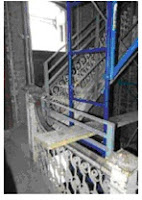


Left: Sample installation of railing modification first proposed did not meet the Secretary’s Standards -- Right: Revised railing that better relates to historic design and meets the Standards.
Application 1 Incompatible (Left) treatment revised to meet the Standards): The interior of a circa 1900 bank building featured this very elaborate stair railing. The railing initially proposed to comply with code requirements was too obtrusive and negatively impacted the delicate detailing of the historic railing. Accordingly, a more compatible (right) (and more refined) supplemental railing was designed consisting of only two, much thinner rails supported by posts capped with finials. The revised design meets the Standards.
To obtain a pdf file of of the U.S. Dept. of Interior's rendering on BSBB's stairwell restoration and to see other models, please email GSS Central @ gsscentral@yahoo.com to have a copy sent to you.
For brief history of the Broad Street Bank Building, please visit "What is Smart Growth Project, part 1" You can return here by clicking appropriate link: it's easy..************************************************************************************* In a previous post, "Trenton's Broad Street Bank Project's Smart Growth & Community Catalytic Features: Hurdles, Challenges, and Opportunities", we left off with the following statement:
Trenton's Broad Street Bank Project's Smart Growth & Community Catalytic Features: Hurdles, Challenges, and Opportunities
What is a Smart Growth Project, part 2
This GSS-SET posting was initially planned to be a "one-shot", short, and cursory look at the walkable, sustainale, and historic preservationists aspect of Trenton's newly renovated Broad Street Bank Building. Having had the opportunity to work very closely with the lead developer of the project and access to information not gleaned from media accounts of the Building's redevelopment process, I thought I had most of what I needed - al beit, a small amount of documentation and imperical knowledge - to do just a single posts to address the topic as it pertained to this particular, and spectacular, rehabilitative undertaking.The Broad Street Bank Building has been successful in both implementing smart growth principles through its adaptive reuse of the historic structure into a mix-use, mixed-income, sustainably designed, multifamily, and conveniently located complex while retaining its primary historic features and adding in a number of energy-efficient features. Taking into consideration that this project was wrought with many economic, structural, and socio-political hurdles and challenges, Bayville Holdings LCC has given the City of Trenton, the State of New Jersey, and the American Republic a model example of building in older, struggling, former industrial urban centers that can be both hard-structurally (bricks and mortar) sound, economically viable, and soft-structurally (people) oriented tying together the human, built, and natural environments."
Sensing the need to double check my data, I found that this development has met, set, and implemented more best practices than meets the eye and, most definetly, more than has been covered in Trenton's metropolitan media, both print and digital. Thusly, I decided to extend and expand our look at BSBB's smart growth, sustainable, and historic features into a series of postings for GSS-SET Central, the first of which you are reading now. In fact, to make your reading and research experience easier than mine has been, I have inserted hyper-links to key documention and highlighted them "in bold italic underlined font/style" so you, too, can conduct your own study of these fascinating most instructive principles of green, smart, and sustainable growth policies, practices, and projects. This is the educational and functional essence of GSS-SET Central and, again, we welcome and encourage visitors to this site to share their own views, comments, experiences, and intiatives with others.
Is Historic Preservation Green?
This was the queston asked and the theme of a presentation at the American Institute of Architect's Conference 2007, which featured key-note lecture was delivered by Victoria T. Jacobson, AIA of the National Park Service (Sante fe, NM).
One of the first questions to ask and areas to explore is, "What is 'green' or 'sustainable'?"
In addition to energy and water conservation, sustainable building practices incorporate environmentally sensitive site planning, resource efficient building materials and superior indoor environmental quality. Some of the key benefits are:
1) lower electric and water utility costs;
2) environmentally effective use of building materials;
3) enhanced health and productivity;
4) long-term economic returns;
5) reduced environmental impact;
We will examine most, if not all, of Broad Street Bank's green, smart, and sustainable features in this series which will resume with part 2 Wednesday, February 20 2008. Please feel free to post your comments, questions, suggestions, and report any broken links. Thanks for visiting and enjoy the rest of GSS-SET Central.
Posted by
GSS SET Central
at
2/09/2008 12:50:00 PM
0
comments
![]()
![]()
Labels: Broad Street Bank Building, Education, green building, Redevelopment, smart growth, sustainability, sustainable, sustainable design, Training
Thursday, February 7, 2008
Prelude to February 13th: Smart Growth's Walkability, Sustainability, and Historic Preservation Meet at Trenton's Broad Street Bank Building



Compare and constrast these images with the photos from Part 2 of this series by clicking on this text.
Trenton's Broad Street Bank Project's Smart Growth & Community Catalytic Features: Hurdles, Challenges, and Opportunities
What is a Smart Growth Project, part 1
What is a Smart Growth Project, part 2
*Click here to return to top of GSS-SET Central
Why Historic Preservation is Smart Growth
By Donovan Rykema
1) Public Infrastructure. Almost without exception, historic buildings are where public infrastructure already exists. No new water line, sewer lines, streets, curbs or gutters are required.
2) Municipalities need financial resources if they are going to grow smart. Vacant, unused and underused historic buildings brought back to life are also brought back as tax-generating assets for a community.
3) New activities - residential, retail, office and manufacturing - in historic buildings inherently reinforces the viability of public transportation.
4) If we are to expect citizens to use their cars less, and use their feet more, than the physical environment within which they live, work, shop and play needs to have a pedestrian rather than a vehicular orientation.
5) Another element in the drive to encourage human movement by means other than the automobile is the interconnection of uses. Based on the foolishness of post-World War II planning and development patterns, uses have been sharply separated. Historic neighborhoods were built from the beginning with a mix of uses in close proximity. Cities with foresight to readjust their zoning to encourage integration of uses are seeing that interconnectivity reemerging in historic areas.
6) As a strong proponent of economic development, I am certainly glad the phrase is "Smart Growth," as opposed to no growth. Smart Growth suggests that growth has positive benefits, and I would agree that is true. At the same time we cannot say we are having smart growth - regardless of how well it is physically planned - if at the same time we are abandoning existing assets. The encouraged reinvestment in historic areas in and of itself revitalizes and revalues the nearby existing investment of both the public and private sector.
7) We see periodic headlines about some real or imagined "Back to the City" movement. Certainly, people moving back to the core of a town or city of any size has a positive impact on a whole range of environmental goals. Well, across America and in many places in my home state of New York, people are indeed moving "back to the city." But almost nowhere is it "back to the city" in general. In nearly every instance it is back to the historic neighborhoods and buildings within the city. We do need to pay attention to market patterns, and if it is back to historic neighborhoods to which people are moving, we need to keep those neighborhoods viable for that to happen.
8) Smart Growth ought to imply not just physical growth but economic growth. And economic growth means new jobs. But who is creating the net of new jobs in America? Not General Motors, or IBM, or Kodak. Eighty-five percent of all new jobs in America are created by small businesses. And for most small businesses there are few costs that are controllable, but there is one - occupancy. Barring massive public subsidies, you cannot build new and rent cheap. Older and historic buildings often provide the affordable rent that allows small business needs to get started.
9) Business districts are sustainably successful when there is a diversity of businesses. And that diverse mix requires a diverse range of rental rates. Only in downtowns and older commercial neighborhoods is there such a diversity. Try finding any rental rate diversity in the regional shopping center or the so-called office park. There isn't any. Older business districts with their diverse rents are Smart Growth.
10) Smart growth ought to be about jobs. Let me distinguish new construction from rehabilitation in terms of creating jobs. As a general rule, new construction is 50 percent labor and 50 percent materials. Rehabilitation, on the other hand, is 60 to 70 percent labor. While we put in an HVAC system from Ohio, sheet-rock from Texas and timber from Oregon, we buy the services of the carpenter and plumber, painter and electrician from across the street. They subsequently spend that paycheck for a haircut, membership in the local Y and a new car, resulting in a significantly greater local economic impact dollar than new construction. The rehabilitation of older structures is Smart Growth.
11) Solid waste landfill is increasingly expensive in both dollars and environmental quality. Twenty-four percent of most landfill sites is made up of construction debris. And much of that waste comes from the razing of existing structures. Preserving instead of demolishing out inventory of historic buildings reduces that construction waste.
12) Its critics have pointed out that the so-called New Urbanism is neither new nor urban. But I don't think anyone here would dispute that in most instances, at least, New Urbanist development is fully compatible with the goals of Smart Growth. I would argue that New Urbanism reflects good urban design principles. But those principles have already been at work for a century or more in our historic neighborhoods.
13) Smart Growth advocates a density of use. Historic residential and commercial neighborhoods are built to be dense.
14) Historic buildings themselves are not liabilities as often seen by public and private-sector demolition advocates, but are assets not yet returned to productive use.
15) The rehabilitation of older and historic neighborhoods is putting jobs where the workers already are.
16) Around the country historic preservation is the one form of economic development that is simultaneously community development.
17) Reinvigorating historic neighborhoods reinforces existing schools and allows them to recapture their important educational, social, and cultural role on a neighborhood level.
18) No new land is consumed when rehabilitating a historic building.
19) The diversity of housing sites, qualities, styles and characteristics of historic neighborhoods stands in sharp contrast to the monolithic character of current subdivisions. The diversity of housing opinions means a diversity of human beings who can live in historic neighborhoods.
20) Historic preservation constitutes a demand-side approach to Smart Growth. I'm not at all opposed to acquiring greenbelts around cities or development rights on agricultural properties. Those are certainly important and valuable tools in a comprehensive Smart Growth strategy. But they only reduce the supply of land to be developed - they do not address the demand for the use of that land. The conversion of a historic warehouse into 40 residential units reduces the demand for ten acres of farmland. The economic revitalization of Main Street reduces the demand for another strip center. The restoration of empty 1920s skyscrapers reduces the demand for another glass-and-chrome building at the office park. Again, I don't mean to be remotely critical of supply-side strategies, but without demand-side responses their successes will be limited at best.
Donovan Rykema is a nationally known consultant on historic preservation economics. This article is reprinted from Wisconsin Preservation News, the newsletter of the Historic Preservation Division of the Wisconsin Historical Society.
Posted by
GSS SET Central
at
2/07/2008 08:14:00 PM
0
comments
![]()
![]()
Labels: Broad Street Bank Building, Education, green building, Redevelopment, smart growth, sustainability, sustainable, sustainable design, Training
Wednesday, February 6, 2008
GSS-SET Featured Video - Urban Land Institute: Reality Check Washington D.C.
 Reality Check: By the Urban Land Institute (ULI)- Over the past 15 years, regional visioning has emerged as a dynamic and important tool for building regional consensus related to growth issues. ULI’s regional visioning program of work assists District Councils and their partners as they plan, build upon, and implement regional exercises and visions. "Reality Check," a one-day participatory visioning exercise created by ULI Los Angeles and inspired by Envision Utah, is an important tool available to District Councils to engage regional leaders in a regional dialogue on growth issues. Please feel free to watch Reality Check: Washington, D.C. by clicking on the title of this post.
Reality Check: By the Urban Land Institute (ULI)- Over the past 15 years, regional visioning has emerged as a dynamic and important tool for building regional consensus related to growth issues. ULI’s regional visioning program of work assists District Councils and their partners as they plan, build upon, and implement regional exercises and visions. "Reality Check," a one-day participatory visioning exercise created by ULI Los Angeles and inspired by Envision Utah, is an important tool available to District Councils to engage regional leaders in a regional dialogue on growth issues. Please feel free to watch Reality Check: Washington, D.C. by clicking on the title of this post.
Posted by
GSS SET Central
at
2/06/2008 11:51:00 AM
0
comments
![]()
![]()
Labels: Broad Street Bank Building, Education, green building, Redevelopment, smart growth, sustainability, sustainable, sustainable design, Training
Tuesday, February 5, 2008
Trenton's Broad Street Bank Project's Smart Growth & Community Catalytic Features: Hurdles, Challenges, and Opportunities
Smart Growth Principles for Communities
Smart Growth has evolved as a term for planned growth that considers a wide array of potential impacts. There are different viewpoints as to the development of the concept of Smart Growth. Many believe that “Smart Growth” originated from the discourse on sustainable development, a movement developed during the 1980s. The most widely used definition of sustainable development came from Our Common Future also known as the Brundtland Report from the World Commission on Environment and Development in 1987:
“Sustainable development is development that meets the needs of the present without compromising the ability of future generations to meet their own needs.”
Source
COMMUNITY COMPASS / HAMILTON COUNTY 2030 PLAN AND IMPLEMENTATION FRAMEWORK ---------------------Appendix 12: Smart Growth Principles for Communities
Trenton's Broad Street Bank Project's Positive Community Impacts:
Building Open Opporunity Structures Together (BOOST) will continue to share it analysis of smart growth, green building, and sustainable design features incorporated into real-time projects that can be studied, monitored, and replicated in similarly situated areas of our cities and towns. BOOST's primary premise is that wherever real estate develpment occurs, and especially when it is proposed for densly populated areas, very strict attention should be given to both soften the potential negative impacts and ensure that the impacted commununity be involved in the planning and decision-making processes very early.
In part 3 of this series, scheduled to be posted on Wednesday, February 13, we will look at walkability and leveraging non-automobile metropolitan multimode transportion systems as a means of achieving several smart growth principles and use the Broad Street Bank project as a model.
In addition increasing the range of housing options; creating or enhancing a vibrant mix of uses; providing multiple choices to getting around, and walkability (spawning activities at the street level and encouraging personal interaction); Smart Growth principles also include building and developing places and spaces that respects community character, design, and historic features and creates various forms of linkages to existing development plans and takes into consideration future trends as well as implementing a creative mix of financing mechanisms to keep the residential and commercial units within the reach of the local market and – at the same time – creating enough value to warrant higher-income earners consider living in an economically struggling urban environ. BSBB has achieved many, if not most, of these mounting, yet important set of rules by being a respondant to and catylsts of community inclusion, al beit, towards the end of the process:
1) Responding to demands by local preservation groups’ desire to saving “Trenton’s First Skyscraper”, Trenton’s largest blighted building, and one New Jersey’s most endangered buildings from demolition;
2)Earning historic preservation tax credits, green building tax credits, and low-income housing tax credits to keep the units affordable to a mix of income levels;
3) Providing the local arts and cultural community with funds for programming and events to help spur a revival of appreciation for life’s more enjoyable pursuits and engagements;
4) Encouraging and facilitating community inclusion in the redevelopment process by partnering with a local community building network to bring over 1,000 curiosity and housing seekers into the building for site tours, workshops, and social networking activities – inbuilt human interest and empowerment;
See more smart BSBB smart growth community-catalytic features in items five (5) and six (6) listed towards the end of this treatise.
In the case of the Broad Street Bank project in Trenton, the developer - although they may dispute this - reached out to the affected stakeholders very late in their project's redevelopment process, thereby minimizing the potential for local residents, organziations, and businesses to be able to adequately prepare to capture any significant portion of the pre-construction, construction, and post-construction jobs and contracts. This late outreach also hampered the developer's ability to mobilize community support when it needed it most and also limited their view of existing needs and conditions and the ability to adequately address and leverage the several hidden assets and challenges posed and presented by local municipal leadership.
However, the municipal leadership actually failed to cooperate with the developer in terms of the project's financing structure and, thusly, the new housing created remained and may continue to remain outside of the reach of the existing local and regional rental market's middle-income earners. Of the 124 apartment units, 26 were set aside for low-income residents with the remaining units left for higher incomce earners.
Moderate income earners earned too much income to qualify for the income-restricted units, but not enough to be able to justify a move from their out-of-town residences to the heart of a still less than attractive area with very few night-time amenities to warrant spending the types of rents being asked for by the developer. In addition, many moderate-income applicants could not get through the strict screening process employed by the rental company and would have to spend more than 40% of their gross incomes to afford the market rate units, thus leaving them without the much talked about "disposable income" to spend at the downtown shops and restaurants during their day-time only business hours.. City leadership was petitioned to pass a resolution of need in order to allow the developer to accomodate the dozens of applicants who would have benefited by having their parking tab picked up by the developer, a reasonalbe reduction of the just-out-of reach market rate rents, and a relaxation of some of the less-restrictive credit screening requirements.
Note: In future renderings on GSS-SET Central, we shall take a closer look at what was proposed to City officials and how this arrangement has worked in other cities to keep housing both affordable to moderate to middle income earners while not requiring tax abatements or cash subsidy from the local governing bodies. **Note 2: Another noticeable (non)factor was the abscence of affordable housing advocacy, homelessness prevention, and civic groups throughout the highly publicized "back and forth" between the developer and muncicipal leadership regarding tax abatements, affordability measures, job creation, parking agreement impasse, and what looked to be "bait and switch" tactics being employed by public officials as promised cooperation to make this project a true "cornerstone" around which Trenton's downtown would make a significant step forward was compromise by stubbornly adhered to positions stated at the projects outset. The jury is still out as to whether the stated aims of the Broad Street Bank project to "activate the city streets" with retail and, again, giving merchants a much needed boost from downtown dwellers with disposable incomes.
In spite of the myriad hurdles this project had to overcome, it still achieved the many smart growth benchmarks that make it a model for other jurisdictions throughout the United States and these shall be examined in subsequent postings here, at GSS-SET Central.
Two more very discernable community-catalytic smart growth features include:
5) Prompting key decision-makers, very hopefully, to take a closer look at better ways to accommodate existing and future redevelopment by examining the Abandoned Properties Rehabilitation Act, Middle-Income Housing Tax Credits, and citizen inclusion very early in the planning and decision-making processes, an often under recognized, yet vitally essential aspect for redevelopment and psycho-sustainability; and
6) Prompting local stakeholders to research, engage, and mobilize around new and emerging tools, strategies and priorities that prepare them for green collar jobs, energy efficiency in their personal and professional lives, sustainable design of buildings and neighborhoods, and building bridges across race, religion, gender, educational, and economic divides to achieve social equity and mutually beneficial outcomes - BOOST’s Green, Smart, & Sustainable Stakeholder Education & Training (GSS-SET).
The Broad Street Bank Building has been successful in both implementing smart growth principles through its adaptive reuse of the historic structure into a mix-use, mixed-income, sustainably designed, multifamily, and conveniently located complex while retaining its primary historic features and adding in a number of energy-efficient features. Taking into consideration that this project was wrought with many economic, structural, and socio-political hurdles and challenges, Bayville Holdings LCC has given the City of Trenton, the State of New Jersey, and the American Republic a model example of building in older, struggling, former industrial urban centers that can be both hard-structurally (bricks and mortar) sound, economically viable, and soft-structurally (people) oriented tying together the human, built, and natural environments
Posted by
GSS SET Central
at
2/05/2008 02:58:00 PM
1 comments
![]()
![]()
Labels: Broad Street Bank Building, Education, green building, Redevelopment, smart growth, sustainability, sustainable, sustainable design, Training
Sunday, February 3, 2008
"What is a Smart Growth Project? - Part 2"
Compare and contrast these images with those of BSSB shown in our "Prelude to Feb. 13...." post by clicking this text.
Trenton's Broad Street Bank Project's Smart Growth & Community Catalytic Features: Hurdles, Challenges, and Opportunities
What is a Smart Growth Project, part 1
Adaptive Reuse: Uncovering Hidden Assets and Obstacles
Source: Brownfield News
Thinking of buying that fixer-upper? Here are a few strategies for looking before you leap. By Celeste Allen Novak, AIA, LEED AP
Imagine the possibilities: You're considering buying a two-story brick hardware store with residential space on the edge of a university town. Built in 1906, it appears to be in good condition, but there are some signs of wear and a small portion of it sits in the flood plain. The building is faced with porcelite metal siding — installed in the 1950s to "modernize" it — hiding its original brick moldings, windows and character. There are many different options you could consider in redeveloping the property. Where do you begin?
First, consider the site and building context. The hardware store may be eligible for tax increment financing (TIF) based on factors ranging from existing contamination from an underground fuel tank to just being an obsolete structure in a core community.
This particular building was part of a cluster of nineteenth century downtown businesses. The building's unique place in the history of the community should be investigated because historic rehabilitation tax credits can be an option under the right circumstances, which can be determined through research and documentation.
Next, consider its environment. Most states regulate the uses allowed in a flood plain and flood way and it is important for a new owner to be knowledgeable about those restrictions, as it will determine how the project can be developed. The topographic survey and flood plain analysis confirmed the suspicion that the hardware store project will require special attention to stormwater treatments.
One hundred years ago the Allen Creek was buried under the pavement at the west side of the building. Without the survey, the purchaser would never suspect that this building is officially in a flood way. Due to its location in the flood plain/way, the addition had to be raised off the ground and required a "submarine" door at grade.
Finally, always consider additional programs. Because the hardware store is in a downtown area and on a bus line, it would qualify for many points in the U.S. Green Building Council's green building rating system, or LEED. As the retrofit continues, opportunities for increasing insulation and upgrading the skin of the building to meet or exceed energy codes will add savings to the operations of the building.
Beneath the worn, cold and ugly façade of the hardware store was a warm brick façade with unusual patterns and a crenellated parapet. With the new owner, the architect was able to see beyond the drab face of the building and imagine the possibilities, including a new 15,000-square-foot addition, which has multiplied the leasable area.
The architect restored the old and renewed the building through the use of an addition. Cool, hip reuse of downtown structures draws tenants to downtowns. Through the use of historic tax credits in addition to brownfield incentives, developers can choose to contribute to the unique context of our communities.
Redevelopment Detectives
What opportunities are there for redevelopment of a property? Who are the experts who can help your evaluation? What steps must be taken before you sign the sales agreement?
Investigating buildings for reuse requires detective abilities. A team of architects, engineers, and environmental and planning consultants can determine the best uses of a structure. Once the highest and best use for the site is determined, there are several questions that need to be answered, beginning with:
What are the regulatory codes for the site, from parking to stormwater?
How does the building breathe?
How strong is the structure?
What "shoes" does it wear?
What are the hidden assets and obstacles that challenge your ability to reweave this fabric of the history of the community?
Site Context
The first step in any adaptive reuse project is to complete an as-built survey of the site. The dimensions of the walls, floors, floor-to-floor heights and existing openings, as well as the mechanical, structural and environmental components of the building must be recorded along with the building's physical characteristics.
In addition, it is also important to identify the building's connections to the community’s history, its infrastructure and the environment. Good initial strategies are to:
Perform a complete zoning analysis.
Prepare a historic structures inventory and a topographic survey, including the utilities and easements.
Complete a Phase 1 environmental site assessment (ESA), testing for environmental contaminants.
The zoning analysis will allow the architect to analyze potential uses compatible with the master plan of the community and may lead to a zoning application for a planned unit development (PUD) or even a complete rezoning to the best use for the existing structure.
Building Context
Buildings are part of our history. Some buildings were owned by famous people, some have been the site of important historical events and some have been places of great creativity, contributing to our understanding of the growth of technology. Some buildings are important as a cluster, testifying to a way of life, such as brownstones in New York or camp towns of the West, and some are significant on their own merits.
Existing buildings have a social history and context that need to be taken into account in planning for reuse. For example, the zoning of most commercial districts often limits residential transformations. The requirements for infrastructure, such as parking, might generate a plan for alternative transportation systems. New stormwater regulations may require additional water storage in underground systems, green roofs, cisterns or permeable pavement.
A preservation architect researches the historical importance of a building, assesses its historic merits, determines if it is eligible (historic importance aside) to receive tax credits and submits an application to a state historic preservation office. He or she will also propose an approach for reuse that will conform to the Secretary of the Interior’s standards for rehabilitation — the federal government’s guidelines for the preservation and reuse of all historic buildings. This research will help determine whether it is possible to restore a building to an original patina or if it makes more sense to insert modern, unique constructions as part of refabricating the older structure.
The Environment
It’s important to know who previous owners were and what environmental contaminants were used on site. Suspicion of environmental contamination should be cause for concern. Often, environmental testing takes several months in order to obtain accurate data. Remediation, if required, may represent an unknown cost and can delay project construction.
Inside the building, you’ll need to inventory environmental conditions, beginning with asking questions such as:
Do you smell mold?
Is there asbestos on the plumbing pipes?
Are there new additions to the building that provide opportunities for trapped moisture?
What is the condition of the roof flashing at mechanical openings as well as the eaves?
Is there adequate roof venting?
How many layers of roofing are on the building and what is the condition of the insulation?
Structure
Most buildings were designed to meet the building code in place at the time of construction. Codes only certify the minimum requirements for safety. To change a building’s use, a structural analysis of the strength of the existing materials must be completed.
Foundations, the "shoes" of a building, support the weight of its design and usage. Adding additional floors, re-cladding the skin of the building with new materials or changing supporting bracing by removing existing support systems requires documentation and calculation. New openings, additional floors and new walls need to be designed and engineered by the architect or structural engineer.
Mechanical Systems
An energy audit of the existing building will determine strategies for energy use and indoor air quality. The insertion of new insulation may also require new venting for moisture control and new mechanical systems may require additional area on the roof or adjacent to the building. The floor-to-floor dimensions will limit the choices for vertical and horizontal ducting for new systems. The site might not have enough room for new mechanical systems such as geothermal wells or ground water heat pumps. The roof might need additional support to carry new mechanical systems.
The integration of structure and mechanical systems requires teamwork from the onset of the project between the architect and mechanical and electrical engineers, along with a thoughtful study of existing conditions.
Safety and Accessibility
Trained to see code issues relating to the Americans with Disabilities Act (ADA) and fire safety, architects are inventive in their abilities to find solutions to accessibility requirements. Often, an older building will not meet the latest fire code and inserting sprinklers or fire walls or rating floors to separate uses can be expensive. The good news is that new materials are available to make retrofitting older structures more affordable while maintaining a historic appearance.
Green Buildings and Energy Savings
LEED currently has a pilot project in place for existing buildings (LEED-EB). A building that is low maintenance and provides a healthy interior environment is good business. New windows should be thermal glass and sunshading should be added to the west and south facades in northern climates.
New mechanical systems might include low-flow water fixtures. The interior should have materials and finishes with low levels of volatile organic compounds (VOCs), which off-gas into the environment. Many options are available for affordable carpets and finishes that contain recycled content or are recyclable.
Adaptive reuse of existing structures offers many opportunities to return value to outdated, even contaminated, structures while enhancing the historic fabric of the neighborhood. By retrofitting the uses of the building to fit the needs of the community, it ensures that the structure will continue its long and productive life. Carefully working through the challenges inherent in these projects can result in great rewards.
------
Celeste Allen Novak, AIA, LEED AP GreenWorks Studio.
This article has been reprinted courtesy of Brownfield News. It appeared in the August 2005 edition of that publication.
Posted by
GSS SET Central
at
2/03/2008 12:34:00 PM
0
comments
![]()
![]()
Labels: Broad Street Bank Building, Education, green building, Redevelopment, smart growth, sustainability, sustainable, sustainable design, Training
What is a Smart Growth Project? - Part 1
Compare and constrast these images with the photos from Part 2 of this series by clicking on this text.
Trenton's Broad Street Bank Project's Smart Growth & Community Catalytic Features: Hurdles, Challenges, and Opportunities
What is a Smart Growth Project, part 1
What is a Smart Growth Project, part 2
At one time the City’s most prestigious address, located at the corner of Montgomery Street and East State Street, was responsible for many of Trenton’s firsts including most notably, the city’s first skyscraper. Designed by William A. Poland and built over two decades to quench the demand for office space in the capitol city, this structure stands today as the as only example of early twentieth century New York School skyscraper architecture as well as the only example in the downtown of French Renaissance architecture. Located in the center of the capitol city’s downtown district, two blocks to the east of the National Register listed New Jersey State House and State House Historic District, the National Register listed War Memorial & Edison State College’s Kelsey Building and two blocks south of the listed Battle Monument, the Broad Street Bank Building is yet another testimony to the city’s rich architectural history and craftsmanship and its new use, today, is as remarkable as its historical place in New Jersey’s Capital Region.
The Broad Street Bank Building clearly used as it precedents the works of Adler and Sullivan in the Guaranty Building of 1894-95 and the Wainwright Building of 1890-91. The Home Life Insurance Company Building by William Jenny is another prototype clearly referenced. As an early skyscraper, the Broad Street Bank Building, similar to these prominent works, hides its steel skeleton behind a decorative masonry veneer. Carefully used patterned openings serve to illustrate a distinctly columnar, modern skyscraper structure.
The Building was built in three phases. The eight-story corner skyscraper was built first in 1900 and was succeeded in 1913 by the 12-story addition fronting East State Street. The final rear eight-story Montgomery Street side addition was constructed in 1923. The original 1900 structure was the city’s first building to be built over four stories and the first city structure built using steel frame construction. In 1913, Poland designed the 12-story addition to the East State Street frontage to expand the banking floor and add additional retail and office space. The final eight-story South Montgomery Street addition built in 1923 completed this important city corner. The entire structure uses the many of the same details of the original building in its additions so that it appears as one cohesive design, built by the one hand.
Aside from noting the significance of the architect that designed the building, the Broad Street Bank was important in the local history of the city. The original eight-story corner building is responsible for many of Trenton’s firsts including the:
1. 1st Trenton skyscraper
Prior to the original building's construction, the downtown area did not raise more than four stories and no structure was built utilizing steel frame construction. At the grand opening, trips up the city’s first elevators allowed an aerial perspective of the growing industrial city that had never before been seen and Trentonians marveled at the center entry revolving door. It was since removed to make way for the day’s storefronts, the revolving door stood as testimony to the ingenuity of modern buildings. BSSBB is still creating FIRST’S.
In a city that was the home to Peter Cooper’s milling innovations which produced the world’s first 7 inch I beams and the home to the Roebling legacy of steel bridges and cable technology, Trentonians were still amazed to see the bank’s skeleton rise high above every other. Trenton possessed a wealth of industry; its world renowned pottery including terra cotta, ceramic tiles and bricks along with its iron and steel products which contributed to the wire cable and bridge building synonymous with the Roebling name, made Trenton New Jersey’s hub of industrial activity and creativity. Trenton was long known as "The City of Iron and Clay." The Broad Street Bank Building is a testimony to this legacy. Its steel structure covered by terra cotta and brickwork is an example of the synthesis of these two important Trenton industries.
------------------------------------------------------
*Click here to return to top of GSS-SET Central
Posted by
GSS SET Central
at
2/03/2008 10:05:00 AM
0
comments
![]()
![]()
Labels: Broad Street Bank Building, Education, green building, Redevelopment, smart growth, sustainability, sustainable, sustainable design, Training
Friday, February 1, 2008
Coming Soon: What is a Smart Growth Project?
Building Open Opportunity Structures Together (BOOST) is dedicated to bringing you the most timely, relevant, reliable, and well-structured information about urban revitalization with an emphasis on new and emerging tools and strategies that lead to beneficial outcomes and opportunities in underserved neighborhoods and markets.
Smart growth is typically measured by "how" and "where" growth occurs. BOOST and other forward-thinking persons and organization's also measure "why" growth occurs and will be developing, promoting, and facilitating forums and venues wherein these measures are addressed by experts in these important areas. You are welcomed and encouraged to post your comments on this Blog in order to share your insights, ask your questions, and promote your initiatives.
What is smart growth? Is there a definable and measurable project that can be used as an example or model for real-time examination? Next week, February 4th through 9th, BOOST will be posting elements of a project it views as such a model - one that can be replicated in America's older, former industrial, and economically struggling cities and regions.
What is Smart Growth?
Smart Growth is an urban planning and transportation theory that concentrates growth in the center of a city to avoid urban sprawl; and advocates compact, transit-oriented, walkable, bicycle-friendly land use, including neighborhood schools, streets that work for everyone, mixed-use development with a range of housing choices.
Smart Growth values long-range, regional considerations of sustainability over a short-term focus. Its goals are to achieve a unique sense of community and place; expand the range of transportation, employment, and housing choices; equitably distribute the costs and benefits of development; preserve and enhance natural and cultural resources; and promote public health.
Note: today, smart growth advocates and proponements have also began to take a closer look at sustainable design, energy efficiency, and community inclusionary planning and decision-making processes as necessary components of measuring smarth growth.
In addition to increasing the range of housing options; creating or enhancing a vibrant mix of uses; providing multiple choices to getting around, and walkability (spawning activities at the street level and encouraging personal interaction); Smart Growth principles also include building and developing places and spaces that respects community character, design, and historic features and creates various forms of linkages to existing development plans and takes into consideration future trends. Smart growth projects are also measured by how well they implement a creative mix of financing mechanisms to keep the residential and commercial spaces they develop - or adaptively reuse - within the reach of the local market they are located in and – at the same time – create enough value to warrant higher-income earners and job-generating businesses to locate in these areas.
Check back soon for the extension and expansion of this line of thought and for a case-study we can all use as "lessons learned", right in your/our own backyard.
Very best regards,
Tim Razzaq for BOOST and Partners
Posted by
GSS SET Central
at
2/01/2008 01:28:00 PM
0
comments
![]()
![]()
Labels: Broad Street Bank Building, Education, green building, Redevelopment, smart growth, sustainability, sustainable, sustainable design, Training








